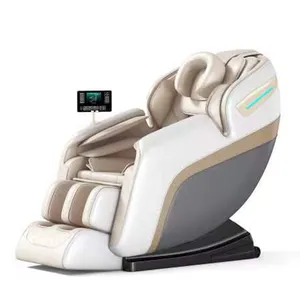ได้รับความนิยมในอุตสาหกรรมของคุณ






Zoncare M5 แล็ปท็อปทางการแพทย์ดิจิตอลแบบพกพามือถือเครื่องอัลตราซาวนด์ 3D สําหรับมนุษย์และสัตวแพทย์
฿18,480.39 - ฿54,144.94
การสั่งซื้อขั้นต่ำ: 1 ชุด







วัสดุสิ้นเปลืองอุปกรณ์ยึดสายสะดือทางการแพทย์ทางนรีเวชสําหรับการตรวจทางนรีเวช
฿0.7407 - ฿1.12
การสั่งซื้อขั้นต่ำ: 2000 ชิ้น







เครื่องอัลตราซาวด์ทางการแพทย์เครื่องสแกนแบบพกพาเครื่องอัลตราซาวด์ทางการแพทย์5D 3D 4D
฿22,183.87 - ฿614,037.65
การสั่งซื้อขั้นต่ำ: 1 ชุด



LTST17นรีเวชวิทยาไฟฟ้าการส่งมอบสูติกรรมการตรวจสอบการดำเนินงานเตียงโรงละครสำหรับโรงพยาบาล
฿58,515.05 - ฿66,662.72
การสั่งซื้อขั้นต่ำ: 1 ชุด







กล้องส่องหลอดลมสำหรับการผ่าตัด,กล้องส่องเอนโดสโคปเอ็นโดสโคปส่องกล้องหูคอจมูกอักเสบหลอดลมแบบยืดหยุ่น
฿8,814.30 - ฿64,366.56
การสั่งซื้อขั้นต่ำ: 1 ชิ้น







ทางการแพทย์ออปติคอลhysteroscopeชุดสำหรับนรีเวชวิทยาการดำเนินงาน
฿11,110.46 - ฿55,552.26
การสั่งซื้อขั้นต่ำ: 1 ชิ้น






เหล็กยึดสูติตารางอุปกรณ์เสริมไหล่สนับสนุนสำหรับนรีเวชวิทยาการดำเนินงาน
฿1,139.57
การสั่งซื้อขั้นต่ำ: 10 ชิ้น












อุปกรณ์ทางการแพทย์โรงพยาบาลนรีเวชวิทยาเครื่องมือ Hysteroscopy Resectoscope ชุดสำหรับนรีเวชวิทยาการดำเนินงาน
฿14,776.91 - ฿148,102.33
การสั่งซื้อขั้นต่ำ: 1 ชิ้น






เตียงตรวจพร้อมโกลนเก้าอี้นรีเวชแบบพกพาจัดส่งตารางการแพทย์สําหรับนรีเวชแพทย์นรีเวชผ่าตัดทางนรีเวช
฿35,183.10 - ฿53,700.52
การสั่งซื้อขั้นต่ำ: 1 ชิ้น
การจัดส่งต่อชิ้น: ฿5,066.74






แพทย์คลอดนวดไฮดรอลิก การผ่าตัด การคลอด การผ่าตัดเอ็กซ์เรย์ โต๊ะผ่าตัดไฟฟ้าหรือเตียงนรีเวช จีนีโคโลจิกส์ Oper
฿40,738.33 - ฿122,177.94
การสั่งซื้อขั้นต่ำ: 1 ชุด
การค้นหาที่เกี่ยวข้อง:
u นรีเวชวิทยานรีเวชวิทยากุมารเวชศาสตร์อุปกรณ์นรีเวชวิทยานรีเวชวิทยาโต๊ะเครื่องมือนรีเวชวิทยาไฟฟ้านรีเวชวิทยาศัลยกรรมนรีเวชวิทยาสอบโต๊ะผลิตภัณฑ์ทางการแพทย์นรีเวชวิทยาคลินิกนรีเวชวิทยาการผ่าตัดนรีเวชวิทยาเวชภัณฑ์นรีเวชวิทยานรีเวชวิทยาแพทย์ผู้ผลิตทางการแพทย์นรีเวชวิทยาฉุกเฉินเครื่องมือนรีเวชวิทยาเตียงผ่าตัดนรีเวชวิทยาร้อน






เครื่องยกไฮดรอลิกยกทางการแพทย์ใช้สำหรับผ่าตัดผ่าตัดสูติกรรมอุปกรณ์ทางการแพทย์
฿35,183.10 - ฿38,886.59
การสั่งซื้อขั้นต่ำ: 1 คู่






โต๊ะส่งทางการแพทย์เหล็กพับไฟฟ้าสําหรับการปฏิบัติการทางนรีเวชของโรงพยาบาล
฿36,294.15 - ฿39,997.63
การสั่งซื้อขั้นต่ำ: 1 หน่วย






BDOP10การออกแบบทางเศรษฐกิจการจัดส่งเตียงนรีเวชวิทยาการดำเนินงานสำหรับการคลอดและการกู้คืนตารางการจัดส่งโรงพยาบาล
฿11,110.46 - ฿12,962.20
การสั่งซื้อขั้นต่ำ: 10 ชิ้น






BDOP10การออกแบบทางเศรษฐกิจการจัดส่งเตียงนรีเวชวิทยาการดำเนินงานสำหรับการคลอดและการกู้คืนตารางการจัดส่งโรงพยาบาล
฿10,740.11 - ฿12,221.50
การสั่งซื้อขั้นต่ำ: 5 กล่อง












เตียงคลอดไฟฟ้าสูติศาสตร์ทางนรีเวชเตียงทางการแพทย์สำหรับการผ่าตัดคลอดทางนรีเวชโรงพยาบาล
฿61,107.49 - ฿63,329.58
การสั่งซื้อขั้นต่ำ: 1 หน่วย






เตียงส่งไฟฟ้าสูติศาสตร์และนรีเวชวิทยาระดับไฮเอนด์โต๊ะผ่าตัดผ่าตัด/สอบเตียงคลอดแบบออลอินวันพร้อม CPR
฿123,140.85 - ฿129,621.94
การสั่งซื้อขั้นต่ำ: 1 ชุด
การจัดส่งต่อชิ้น: ฿19,913.27






โรงพยาบาลไฮดรอลิกนรีเวชปฏิบัติการ Dfc-6001ตารางการผ่าตัด Gyn
฿66,662.72 - ฿83,328.39
การสั่งซื้อขั้นต่ำ: 1 ชิ้น






Hospital examination table obstetric gynecological delivery bed electric gynecology operation medical
฿44,441.81 - ฿55,552.26
การสั่งซื้อขั้นต่ำ: 1 ชิ้น






ผู้เชี่ยวชาญทางการแพทย์มืออาชีพสําหรับโต๊ะปฏิบัติการนรีเวชไฟฟ้าแมว
฿77,773.17 - ฿107,401.04
การสั่งซื้อขั้นต่ำ: 1 ชุด
การจัดส่งต่อชิ้น: ฿16,464.58






โต๊ะปฏิบัติการไฟฟ้าครบวงจรสำหรับโรงพยาบาลทำจากสเตนเลสสตีล304สำหรับการดำเนินการทางนรีเวชแบบมัลติฟังก์ชัน
฿22,220.91 - ฿36,997.81
การสั่งซื้อขั้นต่ำ: 1 หน่วย
การจัดส่งต่อชิ้น: ฿16,464.58






โต๊ะปฏิบัติการไฟฟ้าสําหรับการผ่าตัด เตียงตรวจทางนรีเวช 3 ฟังก์ชั่น วัสดุโลหะ
฿46,293.55 - ฿51,108.08
การสั่งซื้อขั้นต่ำ: 2 ชิ้น






โรงพยาบาลนรีเวชพร้อมเตียงสูติกรรมนรีเวช โต๊ะผ่าตัดนรีเวช การทํางานด้วยไฟฟ้า
฿37,034.84 - ฿111,104.52
การสั่งซื้อขั้นต่ำ: 1 ชุด






โรงพยาบาลจินี ขายด่วน โต๊ะผ่าตัดนรีเวช ศัลยกรรมสูติศาสตร์สําหรับการผ่าตัดพิเศษของผู้หญิง
฿37,034.84 - ฿44,441.81
การสั่งซื้อขั้นต่ำ: 2 หน่วย






ตารางการผ่าตัดนรีเวชและไฟฟ้าตารางการดำเนินงานสูติกรรมการจัดส่งเตียง OT ตารางการผ่าตัด
฿37,034.84 - ฿111,104.52
การสั่งซื้อขั้นต่ำ: 1 ชิ้น

ตารางการผ่าตัดด้วยไฟฟ้าสแตนเลสสำหรับผู้ป่วย C แขน X Ray ตารางการดำเนินงาน
฿25,924.39 - ฿33,146.19
การสั่งซื้อขั้นต่ำ: 1 หน่วย






ET100 ไฮดรอลิกคู่มือการทํางานปฏิบัติการผ่าตัดตารางสําหรับโรงพยาบาลนรีเวชวิทยาโต๊ะผ่าตัดเตียงไฮดรอลิก
฿38,886.59 - ฿46,293.55
การสั่งซื้อขั้นต่ำ: 1 ชิ้น






ที่ยึดขา stirrups ทางการแพทย์สำหรับการผ่าตัดระบบทางเดินปัสสาวะและการผ่าตัดทวารหนัก
฿42,553.04 - ฿57,366.97
การสั่งซื้อขั้นต่ำ: 1 ชุด






SY-I009เตียงสอบนรีเวชวิทยาคุณภาพสูงสำหรับการวินิจฉัยการดำเนินงานและการคลอด
฿4,444.19 - ฿6,258.89
การสั่งซื้อขั้นต่ำ: 1 ชุด






มืออาชีพเยอรมันที่มีคุณภาพสูงสแตนเลสช่องคลอด Speculum,นรีเวชวิทยาเครื่องมือสำหรับการคลอดการดำเนินงาน
฿148.14 - ฿296.28
การสั่งซื้อขั้นต่ำ: 10 ชิ้น






Camjoy Y ประเภท 24Fr นรีเวชวิทยาส่องกล้องส่องกล้องชุดส่องกล้องส่องกล้องสําหรับการตรวจสอบและการทํางานด้วย 26Fr ด้านนอกปลอกมีดเย็น
฿21,480.21 - ฿221,468.35
การสั่งซื้อขั้นต่ำ: 1 ชิ้น






วิทยาศาสตร์และศัลยกรรมผลิตชุดดูดสูญญากาศ OB gyn ดำเนินการด้วยตนเองประเภท malmstrom จัดส่งฟรี...
฿1,814.71
การสั่งซื้อขั้นต่ำ: 5 ชิ้น






Lithotomy อุปกรณ์โต๊ะผ่าตัด,อุปกรณ์เสริมสำหรับการผ่าตัดรักษากระดูกขาเครื่องคนสำหรับนรีเวช
฿33,331.36 - ฿68,884.81
การสั่งซื้อขั้นต่ำ: 1 ชิ้น






ชุดกล้องจุลทรรศน์สำหรับการผ่าตัดทางนรีเวช,ชุดส่องกล้องตรวจทางการแพทย์แบบใหม่
฿16,110.16 - ฿21,480.21
การสั่งซื้อขั้นต่ำ: 1 ชิ้น






SRO-3 อุปกรณ์การแพทย์ โต๊ะปฏิบัติการไฟฟ้าคุณภาพสูง โต๊ะปฏิบัติการไฟฟ้า 3 ฟังก์ชั่น ราคา
฿36,294.15 - ฿38,886.59
การสั่งซื้อขั้นต่ำ: 1 หน่วย



หมวดหมู่ยอดนิยม
เกี่ยวกับ การผ่าตัดนรีเวชวิทยา
การผ่าตัดนรีเวชวิทยา ไม่ใช่เรื่องใหม่สำหรับคนทั่วไปในปัจจุบันและไม่ถือว่าเป็นสิ่งต้องห้ามอีกต่อไป หากคุณกำลังมองหาความสุขสุดท้ายนี้คุณต้องตรวจสอบความยิ่งใหญ่ คอลเลกชัน การผ่าตัดนรีเวชวิทยา ที่ Alibaba.com เหล่านี้ยั่วยวนและโค้ง การผ่าตัดนรีเวชวิทยา คุ้มค่ากับเงินทุกบาทและมั่นใจว่าจะทำให้ค่ำคืนนี้พิเศษสำหรับคุณ ตุ๊กตาเหล่านี้มีลักษณะเหมือนจริงตั้งแต่ขนไปจนถึงปลายเท้าในทุกแง่มุม
ไม่ว่าคุณจะเป็นคนขี้เหงาที่กำลังมองหาคู่ชีวิตที่เหมือนมีชีวิตหรือคู่รักที่ต้องการเติมชีวิตชีวาให้กับชีวิตคุณสามารถใช้สิ่งเหล่านี้ได้ . การผ่าตัดนรีเวชวิทยา สำหรับจุดไฟนั้น ที่งดงามเหล่านี้ การผ่าตัดนรีเวชวิทยา สามารถปรับแต่งได้ตามความคาดหวังของคุณ น่าทึ่งเหล่านี้ การผ่าตัดนรีเวชวิทยา มีให้เลือกทั้งชายและหญิงและทำจากซิลิโคนเกรดยาเพื่อความปลอดภัยในการใช้งาน รับตอนนี้และเพลิดเพลินไปกับค่ำคืนแห่งความหลงใหลและไฟ
Alibaba.com ขอเสนอสิ่งที่น่าทึ่งเหล่านี้ การผ่าตัดนรีเวชวิทยา ในทุกรูปร่างขนาดและชาติพันธุ์ ไม่ว่าความต้องการของคุณสำหรับไฟล์. การผ่าตัดนรีเวชวิทยา คุณสามารถหาได้ทั้งหมดบนไซต์ เหล่านี้ การผ่าตัดนรีเวชวิทยา ได้รับการขึ้นรูปโดยช่างฝีมือที่ดีที่สุดและทุกรายละเอียดที่ซับซ้อนจะได้รับการตรวจสอบอย่างละเอียด ตุ๊กตาเหล่านี้มีดวงตาผมเล็บและส่วนอื่น ๆ ของร่างกายคล้ายกับคนในชีวิตจริง
Alibaba.com ให้บริการที่หลากหลาย การผ่าตัดนรีเวชวิทยา ที่สามารถช่วยคุณซื้อผลิตภัณฑ์ที่เหมาะสมกับงบประมาณของคุณและข้อกำหนดอื่น ๆ ผลิตภัณฑ์เหล่านี้ปลอดภัยต่อการใช้งานได้รับการรับรองและเป็นมิตรกับสิ่งแวดล้อม มีคำสั่งซื้อ OEM สำหรับผลิตภัณฑ์เหล่านี้
ไม่ว่าคุณจะเป็นคนขี้เหงาที่กำลังมองหาคู่ชีวิตที่เหมือนมีชีวิตหรือคู่รักที่ต้องการเติมชีวิตชีวาให้กับชีวิตคุณสามารถใช้สิ่งเหล่านี้ได้ . การผ่าตัดนรีเวชวิทยา สำหรับจุดไฟนั้น ที่งดงามเหล่านี้ การผ่าตัดนรีเวชวิทยา สามารถปรับแต่งได้ตามความคาดหวังของคุณ น่าทึ่งเหล่านี้ การผ่าตัดนรีเวชวิทยา มีให้เลือกทั้งชายและหญิงและทำจากซิลิโคนเกรดยาเพื่อความปลอดภัยในการใช้งาน รับตอนนี้และเพลิดเพลินไปกับค่ำคืนแห่งความหลงใหลและไฟ
Alibaba.com ขอเสนอสิ่งที่น่าทึ่งเหล่านี้ การผ่าตัดนรีเวชวิทยา ในทุกรูปร่างขนาดและชาติพันธุ์ ไม่ว่าความต้องการของคุณสำหรับไฟล์. การผ่าตัดนรีเวชวิทยา คุณสามารถหาได้ทั้งหมดบนไซต์ เหล่านี้ การผ่าตัดนรีเวชวิทยา ได้รับการขึ้นรูปโดยช่างฝีมือที่ดีที่สุดและทุกรายละเอียดที่ซับซ้อนจะได้รับการตรวจสอบอย่างละเอียด ตุ๊กตาเหล่านี้มีดวงตาผมเล็บและส่วนอื่น ๆ ของร่างกายคล้ายกับคนในชีวิตจริง
Alibaba.com ให้บริการที่หลากหลาย การผ่าตัดนรีเวชวิทยา ที่สามารถช่วยคุณซื้อผลิตภัณฑ์ที่เหมาะสมกับงบประมาณของคุณและข้อกำหนดอื่น ๆ ผลิตภัณฑ์เหล่านี้ปลอดภัยต่อการใช้งานได้รับการรับรองและเป็นมิตรกับสิ่งแวดล้อม มีคำสั่งซื้อ OEM สำหรับผลิตภัณฑ์เหล่านี้





























